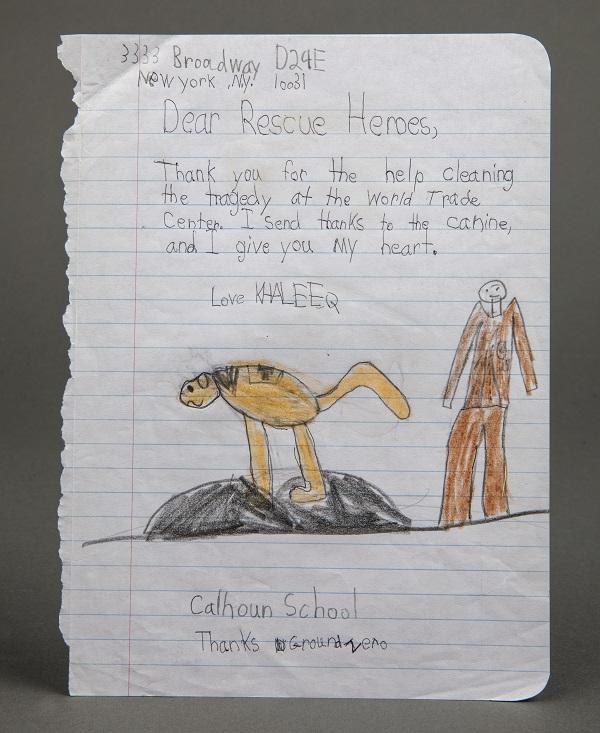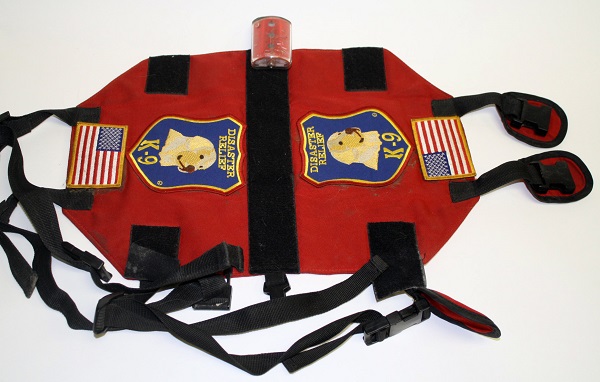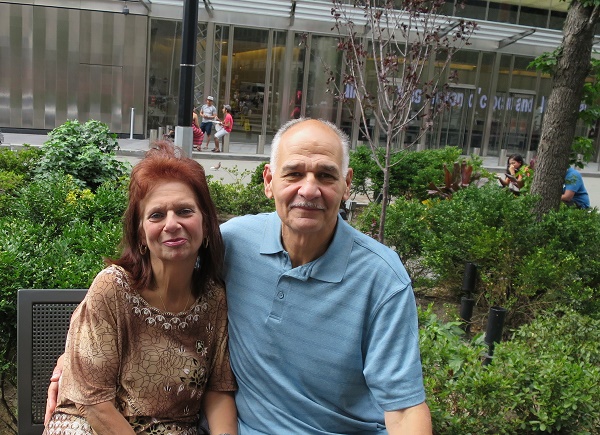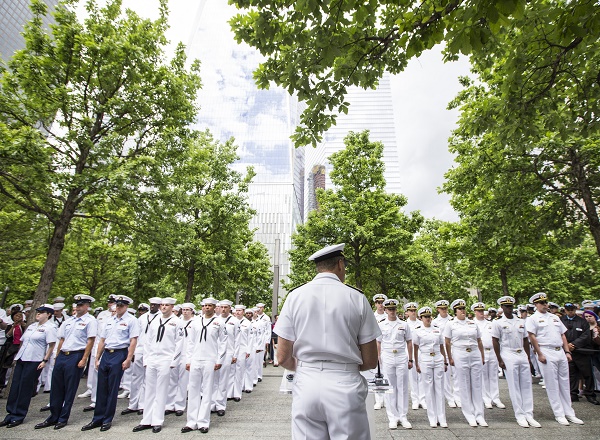Make a donation to the museum
Artifacts Tell the Story of 9/11 Rescue and Recovery Dogs and Their Handlers
Artifacts Tell the Story of 9/11 Rescue and Recovery Dogs and Their Handlers

In the days following the Sept. 11 attacks, rescue workers and their canine partners came to Ground Zero to aid in rescue and recovery efforts. It is estimated that more than 300 dogs joined the endeavor, which initially included searching for the scent of survivors and later evolved into recovering the remains of victims and comforting those on site. The 9/11 Memorial Museum’s collection contains a number of artifacts that tell the story of these heroic dogs and their handlers.
The use of search and rescue and service dogs at Ground Zero brought a sense of momentary respite for those enduring long hours in the wake of a national disaster. At a time of crisis, these four-legged responders showed courage and dedication alongside their human handlers. The last living person rescued from Ground Zero 27 hours after the collapse was found by one of these search and rescue dogs. These hardworking animals also caught the attention of those watching the recovery efforts from afar. Children from around the country sent notes and drawings to rescue and recovery workers at Ground Zero. Many created works just for the canine responders.

On 9/11, Diane DiGiacomo had the day off from her job as a peace officer with the Humane Law Enforcement division of the American Society for the Prevention of Cruelty to Animals (ASPCA) and was taking her dog for a morning walk when she learned that the World Trade Center had been attacked.
Soon after the Twin Towers fell, the ASPCA began fielding calls from lower Manhattan residents who had been forced to evacuate their homes and were unable to return for pets that had been left behind during the crisis. Other requests for assistance came from relatives and friends of pet owners who were missing or believed to have been killed in the attacks.

The ASPCA deployed DiGiacomo for animal rescue operations on Sept. 13, 2001. DiGiacomo’s protocol was to enter apartments in the company of the animal’s owner or a relative or friend of a 9/11 victim. The apartments often were hot and dusty, and it was not unusual for dogs and cats to hide when she first came in. In some cases, she left food and humane traps and returned in the following days until she was able to remove the animals.

Diagnosed with cancer attributable to her service in lower Manhattan, DiGiacomo became an advocate for Congressional reenactment of the Zadroga Act, which addresses health care for those with medical injuries related to 9/11. After DiGiacomo’s death on Nov. 20, 2015, her family donated a patch bearing the ASPCA law enforcement logo in her honor, as well as a card thanking DiGiacomo for her work.

One of the service dogs, Nikie, a golden retriever, worked at Ground Zero with his handler, Frank Shane. Trained by K-9 Disaster Relief, a humanitarian organization that uses dogs to help disaster victims, Nikie received credentials through the American Red Cross. Wearing a work vest, a bandana and booties to protect his paws, Nikie roamed the site and respite centers with Shane. Nikie became an important figure throughout the nine months of the rescue and recovery effort. Shane and Nikie worked at Ground Zero until the site was cleared and even participated in the Last Column ceremony by handing out flags to recovery workers.

Nikie passed away in 2004, nearly three years after her time at Ground Zero. We remember all of the dogs of 9/11 as we near the 17thanniversary of the end of the recovery effort on May 30. Visit our rescue and recovery worker recognition page to learn more about the May 30programs and commemorative activities hosted at the 9/11 Memorial & Museum.
Visitors to the 9/11 Memorial Museum can also learn more about the spirit and stories of these heroic dogs in an exhibition, “Dogs of 9/11,” found outside the Museum’s Education Center classrooms.
By 9/11 Memorial Staff
Previous Post
"The Hardest Job Was Leaving:" Museum Volunteer Reflects on the Rescue and Recovery Effort

“At the time I don’t know if I realized how important, how wonderful it actually was and how it was going to affect me for the rest of my life.”
Next Post
9/11 Memorial to Host Events in Conjunction with Fleet Week New York

The 9/11 Memorial & Museum honors servicemembers during Fleet Week 2019.